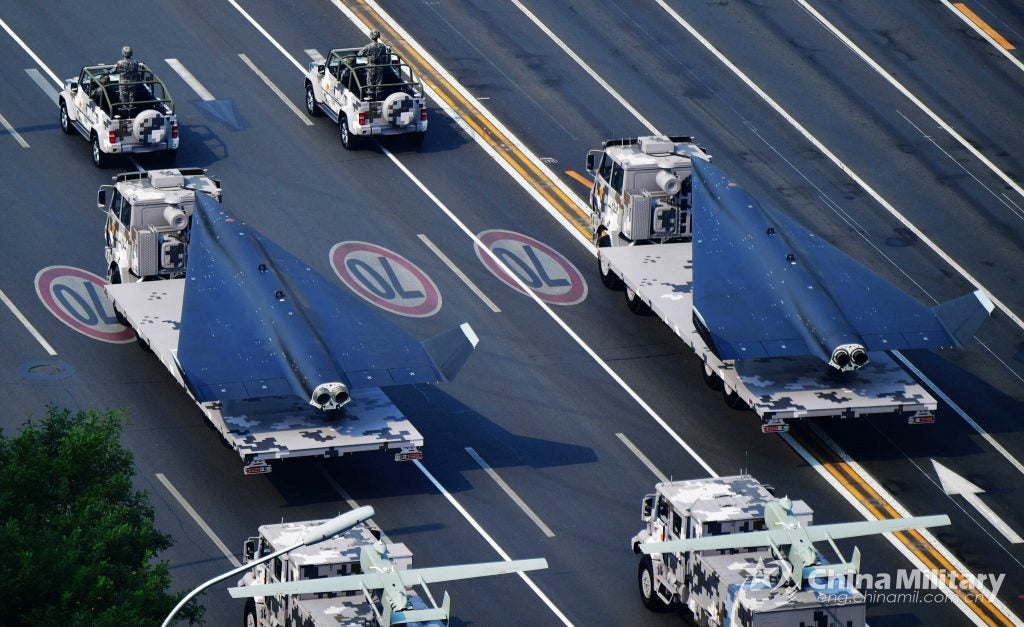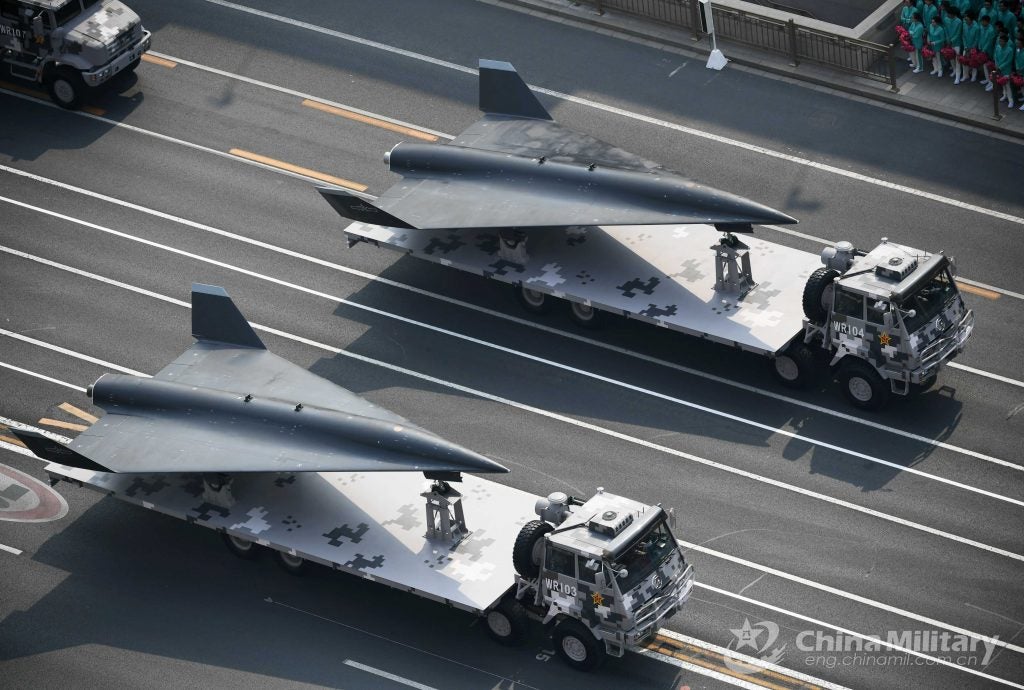China’s WZ-8, The Air-Launched Rocket-Powered UAV
For the 70th anniversary of their founding in 1949, the People’s Republic of China has shown off a UAV like no other. WZ-8 is a supersonic high altitude unmanned aerial reconnaissance vehicle that has perplexed many regarding its capabilities and purpose. The general consensus is that it’s intended to act as a supplement to satellites in providing targeting data (presumably by radar) for China’s long-range strike weapons, notably those intended to destroy US carriers. Able to fly in the region of Mach 3-5, the WZ-8 may have near immunity to air defenses if it keeps its distance.
Such high speed is permitted by an unusual choice of propulsion, rocket motors. While great for getting high and fast rocket motors offer terrible endurance thanks to staggering fuel consumption. X-15, for example, carried 19,000 lbs. of fuel (more than the aircraft’s empty weight) which gave it only 83 seconds of full power flight. This limits WZ-8 to relatively short-ranged missions, though this isn’t a huge issue given that China’s primary interests aren’t more than a few hundred miles from the mainland. Longer range operations could be supported by the forward operating bases that make up China’s Great Wall of Sand in the South China Sea.

To aid with range limitations WZ-8 is launched from a host aircraft, most likely the H-6N which has a semi-recessed hardpoint under its belly for large payloads. The WZ-8 displayed at the parade had lugs on top of the airframe for this purpose. Unfortunately, besides assumptions and visual observations very little information is available about the aircraft. China’s arsenal of long-range precision weapons has continued to expand, this year they revealed their first tactical hypersonic weapon the DF-17 as well as a new supersonic cruise missile the DF-100.
Such weapons are useless against mobile targets without timely intelligence which satellites can only sometimes provide. Aircraft offer not only more flexible timing over the target but also offer better resolution assuming similarly capable sensors are used. In the case of WZ-8, this likely involves a synthetic aperture radar. There’s also the threat that in wartime satellites could become targets, in comparison WZ-8 is more survivable thanks to its high energy and agility.

